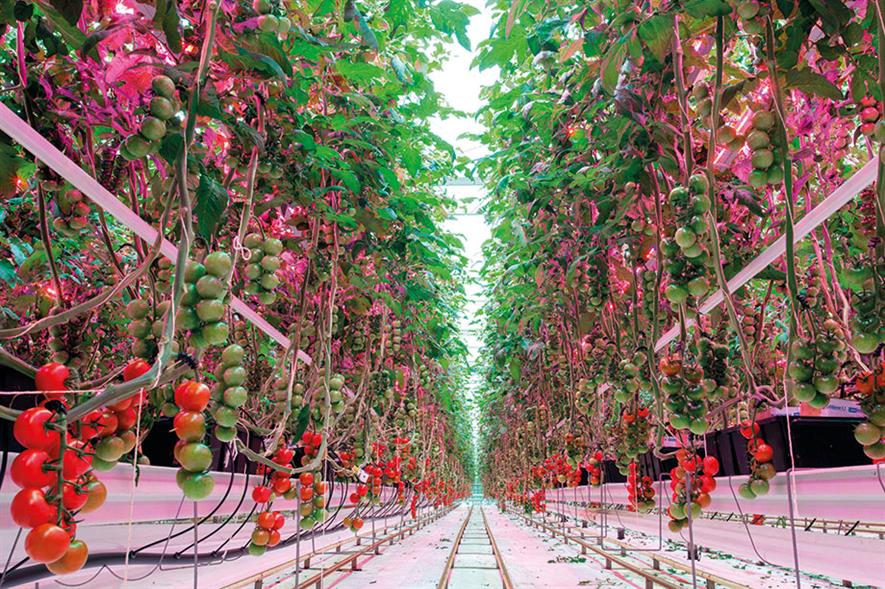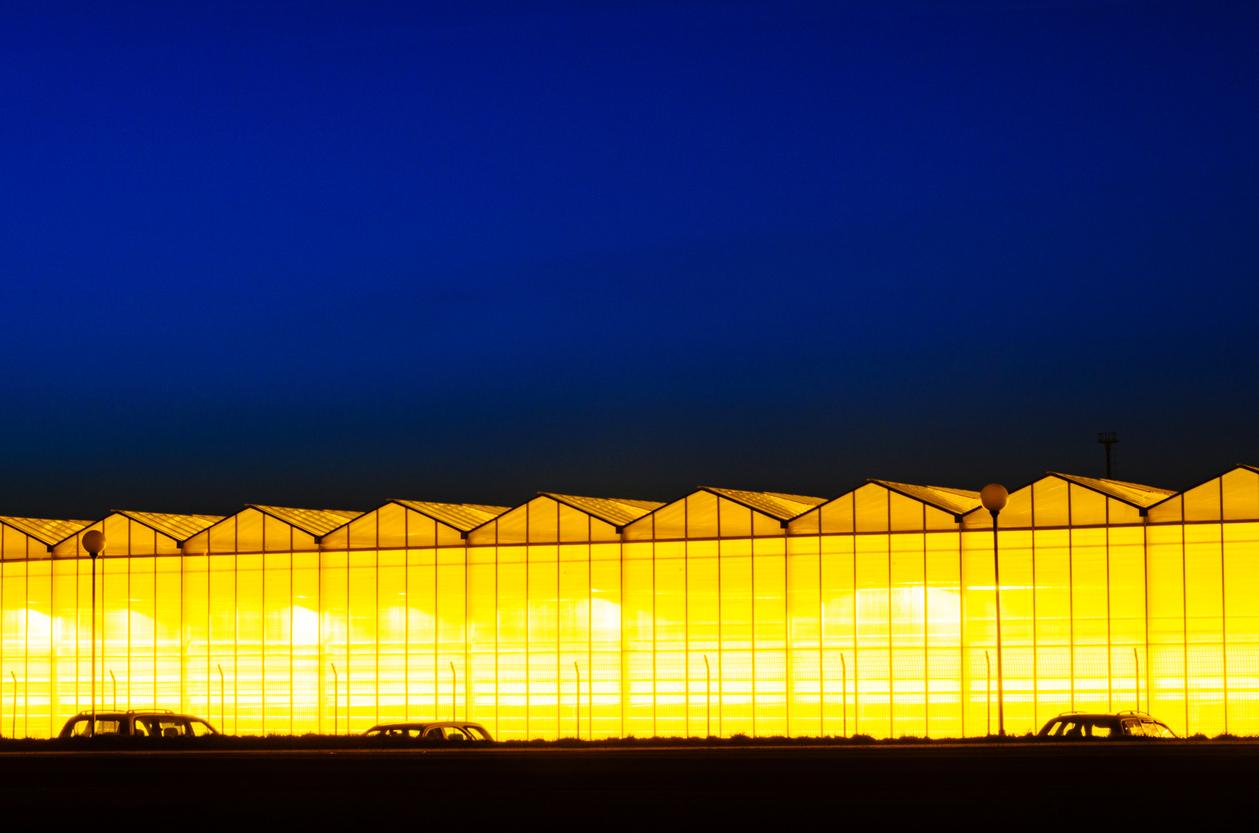Most greenhouse crops are grown in temperate regions and lack natural sunlight from late autumn to early spring. There is a direct relationship between the amount of lighting and crop yields. Insufficient light will slow down plant growth, cause brittle stems and reduce yield. Therefore, the use of artificial light sources is very common.
In order for the plants in the greenhouse to flourish, especially in winter, it is very important to provide them with proper lighting. Therefore, it is necessary to find the most suitable light source for crop growth.

Winter greenhouse day and night lighting requirements
In order to make greenhouse crops grow normally, according to the needs of each specific plant, the lighting of the greenhouse in winter should be 12-16 hours a day. If a day is less than 10 hours, the plant will stop growing. There is no need to illuminate the greenhouse all day, because the plants have their own light rest time, which is about 6 hours.
The visible range of the human retina and its response to electromagnetic rays are 380-780 nanometers. Plants only perceive a small part of this spectrum-400-700 nanometers. The power of the greenhouse and the number of lighting equipment placed play an important role in its growth.
Tip: Ultraviolet rays below 380 nanometers and infrared rays above 780 nanometers will adversely affect the photosynthesis of crops, so please do not use lights in this range.
There are two types of greenhouse lighting for day and night lighting:
Provide the greenhouse with an appropriate amount of light, and the plants will absorb the light under natural light. For this type of lighting, a light energy density of 400-1000 mmol/m 2 should be provided.
Photoperiod lighting, used as a light source at night. This lighting method requires 5-10 mmol/m2. By properly adjusting the amount of lighting in the greenhouse during the day and night, it is possible to affect the growth and flowering of crops.
When calculating the clarity, the light intensity accuracy of the plants must be considered. An automatic lighting system can be installed in the greenhouse. It will respond to dimming and automatically turn on the light at the appropriate time. With such a system, you can not only save time but also energy. These can be special sensors or photorelays for street lighting
Uniform lighting of plants in the greenhouse in winter
The uniform lighting of the winter garden has a great influence on the cultivation of crops. For greenhouses, special lamps responsible for providing lighting are used. They have reflectors that can reflect light so that the light falls evenly on the surface it reaches.
Tip: This function can design the position of the light so that all plants can receive the same flower lighting in winter, regardless of their position relative to the lighting equipment.
Choice of fixtures and other light sources
quality. It is best to buy products from trusted manufacturers who can guarantee the quality of their products. What standards should be followed when choosing greenhouse lighting:
power.
The amount of radiation.
Chromatogram of the device.
Which lamp is better
The once popular incandescent lamps are sometimes still used out of habit. But their time has passed and they are not suitable for greenhouses. They are inefficient and inefficient.
The mercury lamps used for factory lighting are smaller and more efficient. They have a spectrum suitable for plants and are inexpensive. But this kind of lamp contains mercury, which means that if the lamp is broken, mercury vapor will not only threaten plants, but also human health. Moreover, these lamps often emit ultraviolet radiation doses higher than acceptable standards. Therefore, it is best to refuse to buy them. This kind of lamp cannot be thrown anywhere. Need special treatment.
Sodium lamps are different from mercury lamps in that they emit safe energy and rarely break. They are particularly suitable for flowering crops. Since red rays dominate the entire spectrum, many ovaries are formed in the plant, and the fruits are developed and not scattered. But sodium lamps are expensive.
Tip: For green or root crops, it is not suitable to use sodium lamps as the main light source.
Sometimes halogen lamps are used in greenhouses. But installing them is expensive and difficult. This kind of lamp cannot be used for a long time, and its radiation spectrum will be close to the sunlight in the case of excessive ultraviolet rays. The advantage of the halogen lamp is the high heat transfer rate, which can save the heat of the greenhouse in winter. Read more about their features in this article.
Such light sources must be placed 30-90 cm away from the plant to prevent its leaves from being burnt. Halogen lamps are very resistant to moisture-water droplets can cause the lamp to explode. And because the crops in the greenhouse need to be watered regularly, it is almost impossible to avoid moisture ingress. Frequent lamp replacement is an additional cost.
Equipment with fluorescent lights is also used in greenhouses. Their emissions are suitable for most greenhouse plants.
Tip: These bulbs are cheap and do not emit light, and they remain cold after several hours of operation.
The biggest disadvantage of fluorescent lamps is low light output. In addition, you will have to spend extra money on structural installation, which you cannot do by yourself.
The most ideal greenhouse lighting option today is LED lights. They illuminate crops evenly and have the following advantages:
Wide radiation range;
Safe ingredients;
High energy efficiency;
Able to work under low network voltage;
Low heat transfer;
Long work time;
high strength;
The LED illuminator can be placed at any distance from the factory and will not cause harm to it. If compared with other lights, the price of LED will be higher. However, given its long service life (about 10 years), this shortcoming will soon be paid off.
It can be concluded from the above content that the most ideal lighting for a greenhouse in winter is to use LED lights. But I don't want to advertise for them. Other types of lights also have many advantages. When choosing, you must consider the characteristics and needs of the plants growing in the greenhouse. Every culture has its own spectrum of rays. It is important to pay attention to the efficiency, safety and ease of installation of the lighting equipment.
























